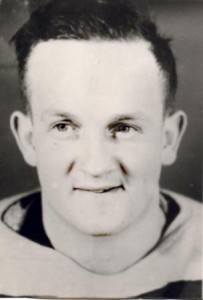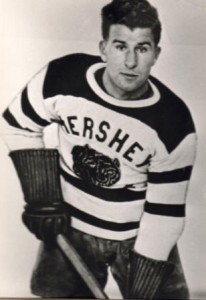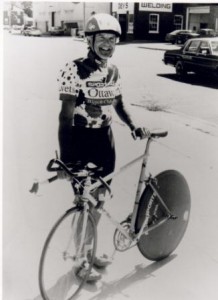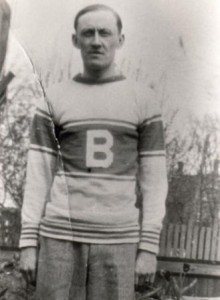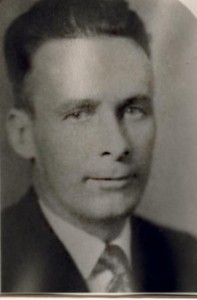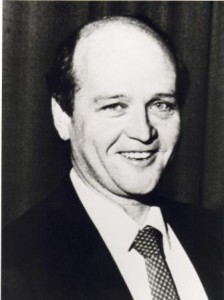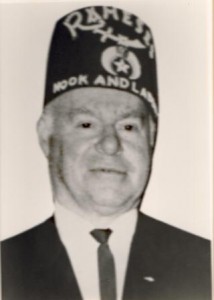 Red Fawcett was born in the South End of Collingwood, a section of the town that
Red Fawcett was born in the South End of Collingwood, a section of the town that
produced many great athletes over the past eighty-years.
An exceptionally clean athlete, but an aggressive one, Red starred at every game
he chose to play; Hockey, softball, basketball, football and track and field.
He played them all and he gave everything he had in every contest.
I remember him when he was a freckle-faced kid of eleven or twelve. We kept chasing him away from the ball diamond because he was too small but he kept coming back. He made the South End team with players six years his senior.
Red did not pursue hockey after he left the junior ranks, other than town league,
due to business pressure, but he could have made the Intermediate “A” club anything up until his early thirties.
He possesses a wicket shot from the wing and was an artist at picking the top corner of the net from what seemed to be an impossible angle.
He was always up with the first three scorers in the town league but I think his greatest winning goal came on the night of March 12th, 1934. It was the third and final game of the play-offs between his West End club and the old Central Tigers. The
score was tied at 4-4 and Red had taken a rough ride for 58 minutes from a trio of rough customers-Don Haney, Frank Mirlees and Bill Calvert.
Red knew there was nothing to do but “take it” because Buck Walton was the referee and Buck was never one to quibble over a bit of rough stuff. It had to be a deliberate butt-end, a cross check across the mouth or a twenty-foot charge before Buck would hand out a penalty. The clock said 20 seconds to go when Red stick handlers through the entire Central team and blazed a shoulder high shot past Bob Patton for the winning goal and the championship.
That was the same year that the Town League All-Stars took on the Intermediate
“A” team and beat then 6-5. Red had a pretty fair share in that victory. He scored three goals, including the winner. The year 1934 was a pretty good year for Red from a sports standpoint. After starring on the championship hockey team he helped the old Collingwood Grads win the Blue Mountain Softball League title. He pitched five games for the Grads that season and also played centre field shortstop when he wasn’t on the mound. His batting average was exactly .400, second highest in the league.
Red was not the fastest pitcher in Collingwood softball history but he had perfect
control. In the outfield he could go back deep for the long hits or come in fast to pick low liners of his shoe laces. He could throw strikes from centre field to the plate. When playing the infield he dug everything out of the dirt between second and third and could knock the first baseman down with that peg across the infield.
In the many years I watched him play hockey and softball, I never once heard him
dispute the decision of a referee or an umpire.
It was the same when he played for the Collingwood Collegiate.
A steady block of granite on the line in football, a tough guard on the basketball team and a steady point winner on the track and field team. Red Fawcett was a gentleman and a sportsman. Need we say more? He died in 1972 at the age of sixty.
 Born in Collingwood on July 29, 1929, Cal is a lifelong citizen of our community. A graduate of Victoria Public School and Collingwood Collegiate, Cal and his wife Lenora have five children – Wendy, Patricia, David, William and Carole.
Born in Collingwood on July 29, 1929, Cal is a lifelong citizen of our community. A graduate of Victoria Public School and Collingwood Collegiate, Cal and his wife Lenora have five children – Wendy, Patricia, David, William and Carole.

